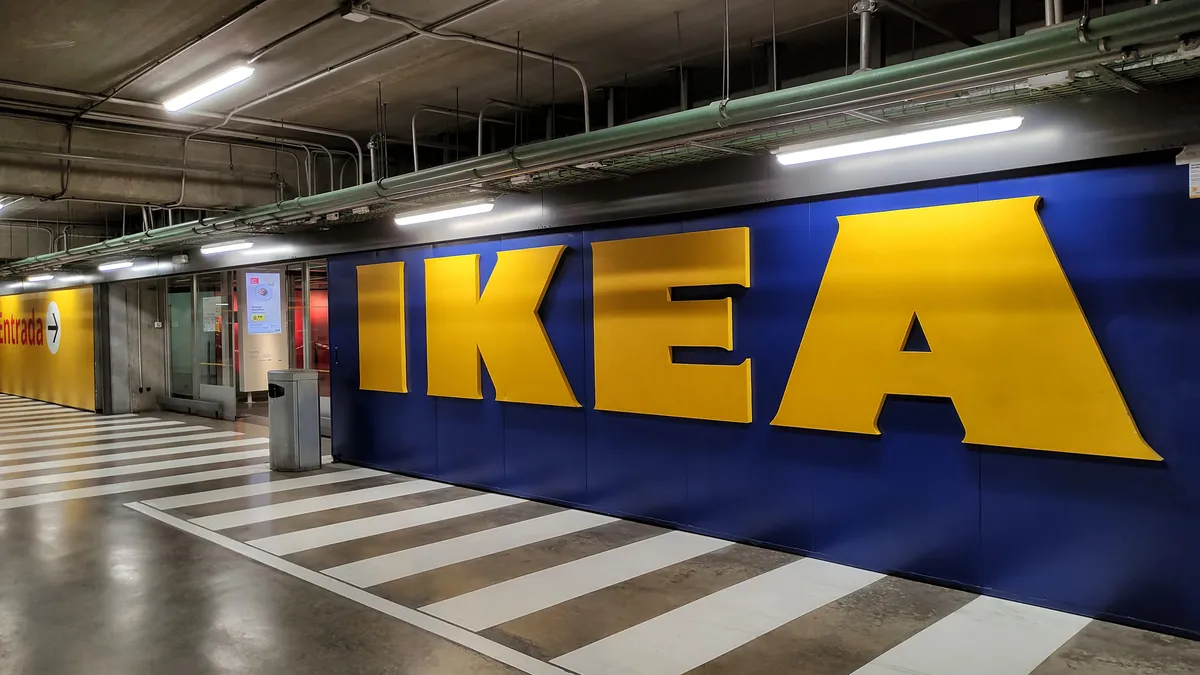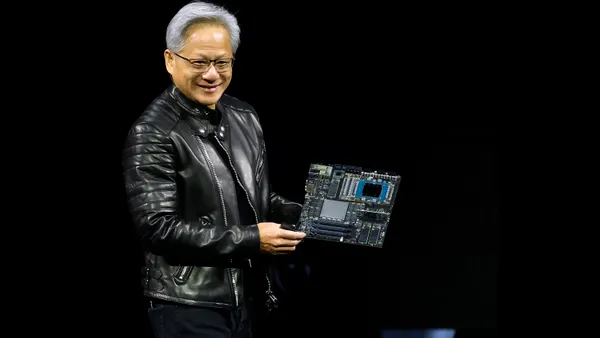Editor's note: This article is part of The Water Cooler, a recurring column for technology executives to digest, discuss and debate. Next up: How do you know when it's time to relaunch your career? Email us here.
The first computer we ever had at home was a spry 386 IBM clone from the mid-1990s. It came complete with a bulky voltage regulator, thick-bottomed monitor and a copy of the game that drew me in for hours on end: Pac-Man.
In the second grade, my school opened up a computer lab — sending my geeky seven-year-old self as close as I ever got to outer space. I can still remember the rows of vintage computers with their dim green indicator lights, soft-whirring CPU fans and dust covers that spread the smell of plastic through the air.
In enterprise, though there's nostalgia for old, er, classic IT, there's also fear over what aging implementations may mean for the agility of the business. Executives grapple with the tension between the expense of overhauling aging systems and the disruption of large-scale replacements as faster, more nimble competitors close in.
In a tribute to vintage IT, we asked execs to stroll down memory lane and remember old technology systems they encountered in their careers.
— Roberto Torres
(The comments below have been lightly edited for length and clarity.)
Bipin Jayaraj, CIO at Make-A-Wish America
"We had the whole mainframe made into pieces and made trinkets out of that which was gifted to everyone on the decom team."

Bipin Jayaraj
CIO at Make-A-Wish America
My oldest system that I have encountered was an IBM AS400 system, which ran legacy ERP system called MACPAC for my previous aerospace client. When the system was decommissioned in 2012, we had the whole mainframe made into pieces and made trinkets out of that which was gifted to everyone on the decom team.
Definitely can't forget the days we were feverishly changing code in 1999 to beat the Y2K. Waited with baited breath on Dec. 31st, 1999 as the clock shifted across the time horizon from Australia/New Zealand all the way through to the United States — a grueling 32 hour window of monitoring and operations.
John Abel, CIO at Extreme Networks
"It was also a significant effort to convince management to move away from a character-based system to a GUI solution, and (for anyone who may recall character-based applications) the complaints were that the new solution was much slower!"

John Abel
CIO at Extreme Networks
I don't want to name names, but early in my career I came across a system that had been in existence at the company for over 20 years. It was a custom learning application written in COBOL and had been in place since the company was founded. It still operated on an old VAX DEC computer, even though PCs, Windows, and the internet were fully available. It reminded me of systems I had seen in college, (and no, punched cards were not in use when I was in college!).
We were in the process of replacing this system with a new Learning Management System application, and I recall how challenging it was to convince the users and the client that it was time to let it go. It was also a significant effort to convince management to move away from a character-based system to a GUI solution, and (for anyone who may recall character-based applications) the complaints were that the new solution was much slower!
I am delighted our industry continues to evolve and reinvent itself every 5 years or so, and today we have cloud solutions that are regularly updated without the need for those massive upgrades.
Eric Drobisewski, senior cloud architect at Liberty Mutual
"It's dramatic the level of automation we've been able to put around technology like the mainframe."

Eric Drobisewski
Senior cloud architect at Liberty Mutual
I came from a web development world when I started at Liberty Mutual and oddly enough, one of the roles I got shifted into at the time to help address some challenges we were having was in the mainframe space. I honestly had no idea about mainframe computing, what it meant — ISPF, TCL green screens, all these different things.
The compute level really wasn't that much different than what was happening anywhere else but the implementation and how you worked with it was definitely a bit different and hard to get used to.
It's still one of the most critical systems we have and processes over six billion transactions annually. It's so critical and core to our business from a transactional perspective. There's been amazing work done there to modernize and automate all of the processes around the mainframe.
You look at the lifecycle updates at this point, those used to be things that took weekend's worth of downtime, and now they fully automate these things during these really, really short duration maintenance windows with the highest degree of consistency in getting them done in less than an hour. It's dramatic the level of automation we've been able to put around technology like the mainframe.
Paul Miser, chief strategy officer at Icreon
"What stared back at me was an AS400 Database – black screen, green letters, and no mouse inputs, just keyboard and commands."

Paul Miser
Chief strategy officer at Icreon
Coming out of business school in the shadow of the dot-com bubble burst, I wanted to get my hands dirty in the basics of technology and data, as I saw a massive upside in the years to come. What I didn't expect was how dirty my hands would get.
I went to work at a global leader in subscription fulfillment for magazines, products and the like. The vision was to learn data-driven personalization at scale to drive innovation in publishing working with titles like Reader's Digest and Sports Illustrated. The reality was vastly different.
I remember on my first day, I expected to turn on my computer and see the future of personalization with shiny new tools. What stared back at me was an AS400 Database – black screen, green letters and no mouse inputs, just keyboard and commands. Keep in mind, this was the early 2000's, so technology was starting to become very mature.
Each task seemed to take weeks of planning with multiple roles. In essence, the antiquated technology drove the process and the strategies versus the other way around. Something that should never be done.
It was a scenario that I thought was archaic at the time, but what is most amazing that I continue to run into AS400 from time to time.
Gil Peleg, CEO and founder of Model9
"It was the size of a refrigerator, water-cooled and did not support TCP/IP communications."

Gil Peleg
CEO and founder of Model9
The oldest enterprise platform I personally worked with in my career was an IBM Mainframe S/390 G3. With its 350 million instructions per seconds (MIPS), it was running a system managing four million accounts and serving 1,000 transactions per second with millions of PL/1 and COBOL lines of code.
It was the size of a refrigerator, water-cooled and did not support TCP/IP communications.
I was working as a system programmer, which is a system administrator in mainframe terminology, in charge of performance and availability. It was my job to review reports and tune system configuration to provide best performance and maximum throughput within the limited available resources, as well as planning for recovery in a disaster scenario.
Warren Barkley, CTO at Clearwater
"Access to the mainframes (AS 400s) was not too bad, but some information was stored on reel-to-reel tape."

Warren Barkley
CTO at Clearwater
Way back when I was a little kid, I used to go to a university computer lab with my dad to feed huge stacks of paper cards into mainframes which programmed the machines. For a joke, the grad students would turn a random card upside down and the whole stack would explode in the air when the reader hit it. Poor students would have to pick up hundreds of cards, re-sort and re-feed the machine — which I at the time thought was a fun game.
Additionally, early in my career we were building a web service to allow for humans to check and search medical records. Access to the mainframes (AS 400s) was not too bad, but some information was stored on reel-to-reel tape. The suggestion from the team that owned this was to send a message to the tape team so they could find the reel on the dozens of racks and load it up. This could take minutes or hours. When I asked, "what do I tell the user while a person runs around looking for the tape?" I was told to flash a message that says, "finding the tape." Surprisingly, this never went to production.
Darla Wolfe, business transformation leader
"Even though the existing technology was dated, the most challenging part of moving to more current applications was still the streamlining of business processes and related change management."

Darla Wolfe
Business transformation leader
Having focused on digital transformations for mid-size companies in growth-mode, I've had multiple opportunities to hone clunky business processes and replace homegrown systems with tier one ERP and SaaS implementations.
The oldest technology that I have transformed as of late would be a customized LAMP [Linux/Apache/MySQL/PHP] based application with patchwork functionality fill-ins using oversized Excel spreadsheets and reams of paper printouts.
Even though the existing technology was dated, the most challenging part of moving to more current applications was still the streamlining of business processes and related change management.
Agustin Huerta, SVP Studios & VP of Technology IoT and Data & AI Studios at Globant
"It's almost impossible to understand how much people's needs have changed since things like mainframe computers were first instituted."

Agustin Huerta
SVP Studios & VP of Technology IoT and Data & AI Studios at Globant
Some of the oldest legacy systems we have faced at Globant were on projects in the financial industry. Within the retail, investment banking and insurance industries, there are still many core systems that rely on surprisingly old technology such as mainframes for their most critical operations.
They tend to have a lot of information that is processed offline in batches after hours, especially after midnight.
Even though software like these can last a long time, the needs of companies do not stand still – it's almost impossible to understand how much people's needs have changed since things like mainframe computers were first instituted. Once we build a system, it is embedded in the organization.























